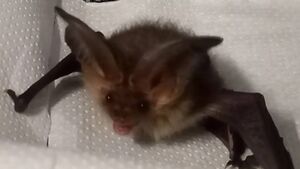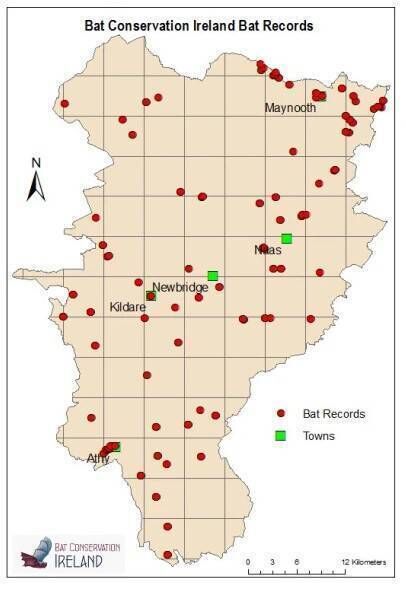New bat conservation website launched

A bat pictured in Ardclough last summer.
Bat Conservation Ireland (BCI) has launched GardeningForBats.com, a project supported and funded by The Heritage Council, which provides tips and guidance to gardeners and those involved in community gardening or Tidy Towns initiatives to help improve habitats for bats.
This will come as scant surprise to the citizens of Kildare, as the county already has the Kildare Bat Group based in Clane, which has identified seven of the nine indigenous species of bat here in Kildare.
“This project began because people often ask us what they can do to help bats,” said Niamh Roche, BCI’s lead on the project.
“Gardens cover a huge area of land in Ireland and bats depend on them when foraging for their insect prey, particularly in urban areas,” she said.
“The good news is that it is easy to help bats.
“Really simple measures such as turning off outside lights when they are not needed, composting garden waste, avoiding pesticides, including native plants and choosing garden varieties that attract nocturnal pollinators to your garden, will all help.

By helping bats, you will also be doing yourself a big favour since bats are some of nature’s best insect pest controllers.” Last Tuesday (4 February) BCI launched the first phase of this ‘Gardening for Bats’ project, and have have developed a website that hosts short videos and other information.
The videos are beautifully filmed pieces, that explain some techniques and features that can be incorporated into outdoor spaces to benefit bats and other wildlife. They are divided into four topics: techniques, features for bats, choosing plants, and how bats help gardeners.
Niamh pointed out the important role of gardeners in Ireland.
“While people can often feel paralysed in the face of biodiversity loss and the climate crisis, we are saying that if you are involved in the management of any outdoor space, then there are really easy measures you can implement that will be of benefit,” she said.
“With this project, we are encouraging anyone who has an outdoor space – be it a large garden or tiny balcony – to take up the baton, get their hands dirty, and play an active role in bat conservation.” BCI are currently planning the second phase of this project to begin in 2025.
“We want to collaborate with Irish nurseries and garden centres to introduce a ‘bat friendly’ logo for suitable plants.
“We will also be developing posters and other materials for garden centres.
“Members of the public, garden centres or nurseries who are interested in finding out more can check out gardeningforbats.com, watch the videos there and sign up for more information as the project progresses,” she concluded.
Sadly, these amazing and valuable creatures can be portrayed negatively by the media and they often get a bad rap – for example, for sucking blood or getting tangled in hair – both fake facts.
The priceless ecosystem services they provide to humans include seed dispersal, pollination and pest control.
All Irish bats are insectivores, and they eat a range of invertebrates including spiders, moths, dung flies and beetles.
Our nine species of bats can readily be spotted over our houses, fields, hedgerows and waterways feasting on midges, mosquitos and other biting insects that interfere with our enjoyment of warmer evenings and nights.
In Ireland, all bats are protected under wildlife law, but they are threatened by habitat loss, climate change, pollution and insecticides.





